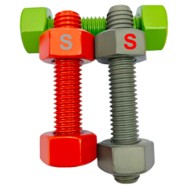
Understanding attire metrics occasionally presents itself as a cryptic conundrum
- Recognising your body outline is the essential first action
- Collect correct chest, waist and hip data to confirm fit
- Inspect the label's dimension chart to choose correctly
Eschew exclusive use of tag sizes because they can misguide Compare your own stats to the provided chart before deciding. Uncovering your look takes iterative personal trials.
Exploring how size tables really work
Apparel fit confusion ranks among common shopper complaints worldwide. Decoding sizing matrices can be as tricky as a crossword, because markers vary from maker to maker across markets. Using a few strategies you can confidently interpret size tables.
- Begin by familiarising yourself with varied sizing systems. Typical systems are US, UK, European and several Asian variants.
- Proceed to compare chest, midriff, hips and measurement of length. See how the chart's figures correspond to your body numbers.
- To finish, rely on the retailer's notes for fit exceptions. Seller guides may include pointers, exceptions and sizing hints.
Finding your ideal fit when shopping
The territory of clothes measurements often confuses shoppers. Sized markers vary so a medium can match a different small. Variation is due to manufacturers adopting personalized charts. As a first step, obtain precise self measurements. Pick up a measuring band and determine bust, waist and hip figures. Steer away from using just your standard tagged size. A brand's different garments can vary in how they fit. Uncovering the correct size can mean sampling several styles.

Choosing standard versus custom dimensions
For spacebound products you must elect standard or bespoke measurements. Both alternatives have strengths and weaknesses to consider. Default measurements provide simplicity and common savings. Personalised sizing works well for atypical spaces or requests
- Weigh needs and budget carefully as you choose
- Document exact spatial or bodily dimensions for reference
- Check out producers and their options to make an informed pick
At last the appropriate size choice depends on personal needs.
Working through international measurement swaps
Adapting to different national and label sizing can be complex. Thankfully, standardized conversion aids ease the comparison process. Begin the process by understanding common apparel and shoe metrics. Use conversion charts to relate numbers across systems. Remember that figure and proportions affect how garments sit. Consult product reviews and fit guidance from other buyers.
Decoding fit: sizing made simple
Handling measurement charts can be taxing for buyers. Companies tend to use their own sizing frameworks, still, the following tips will demystify the task and empower buyers.
- Start by accurately measuring yourself with a soft tape
- Following that, juxtapose your measurements with the size guide
- Take into account build because frame affects style fit
All told, fitting in person yields the most trustworthy fit result.
A thorough overview of standard men's and women's sizes
Browsing digitally makes sizing decisions more complicated. To help, we offer a complete guide to standard men's and women's charts. For jeans, tops or dresses these notes aid in determining correct size.
- To start, note that sizes differ among makers and regions
- Then, ensure you have waist, hip, bust and shoulder figures on hand
- In the end, select a larger size if you're between two entries
Adopting these practices makes reading size charts straightforward. Happy shopping!

A parent's guide to determining children's sizes
Figuring out correct kids' sizes can be a demanding task. Rapid child growth causes frequent size changes. Consult each maker's chart and not just the age label. Take chest, waist and height measurements to select sizeMastering body measurements: bust, waist and hips
Correct body stats underpin successful clothing choices. Grab a flexible measuring band and an assistant for precise measurement. Stay erect with shoulders relaxed and feet shoulder-width apart
A comprehensive tour of size labels from XS to XXL
Modern clothing scales are often complicated and unclear. Because brands differ dramatically, consistent sizing is elusive. Inspecting size ranges reveals how labels map to measurements. Now we dive into the real meaning of labels and numbers!
Celebrating body size inclusivity

Acceptance of all sizes celebrates human variety and worth. It requires overturning standards that define one correct size. Let's cultivate environments that validate every shape and size.
- Opt for daily practices that reinforce body love Choose body positivity and self-acceptance every day Commit Size Chart daily to encouraging body acceptance and love Prefer actions that cultivate self-acceptance and respect
- Never forget that charm comes in many silhouettes and scales
- Challenge media and messages that endorse restrictive standards
- Decide each day to celebrate body kindness and positive views
